On April 17, the Institute of Vietnam and World Economics (Vietnam Academy of Social Sciences) and G3 Media organized a seminar on "Special policies for developing national strategic technology", with the participation of many scientists and experts in the fields of technology and economics.
The goal is to clearly define the concept of strategic technology for Vietnam and propose different mechanisms and policies, not following the beaten path. Experts discussed and looked frankly at the reality of key issues to promote the development of science and technology in the spirit of Resolution 57.
This emphasizes the need to change thinking, eliminate old policies that are no longer suitable, and at the same time create a healthy competitive environment, attract investment from the private sector and highlight the importance of taking advantage of opportunities from cutting-edge technologies and international cooperation to bring Vietnam forward in the new era.
At the seminar, experts said that artificial intelligence, semiconductors or biotechnology... are all important fields, but it is necessary to clearly define which fields are strategic technologies.
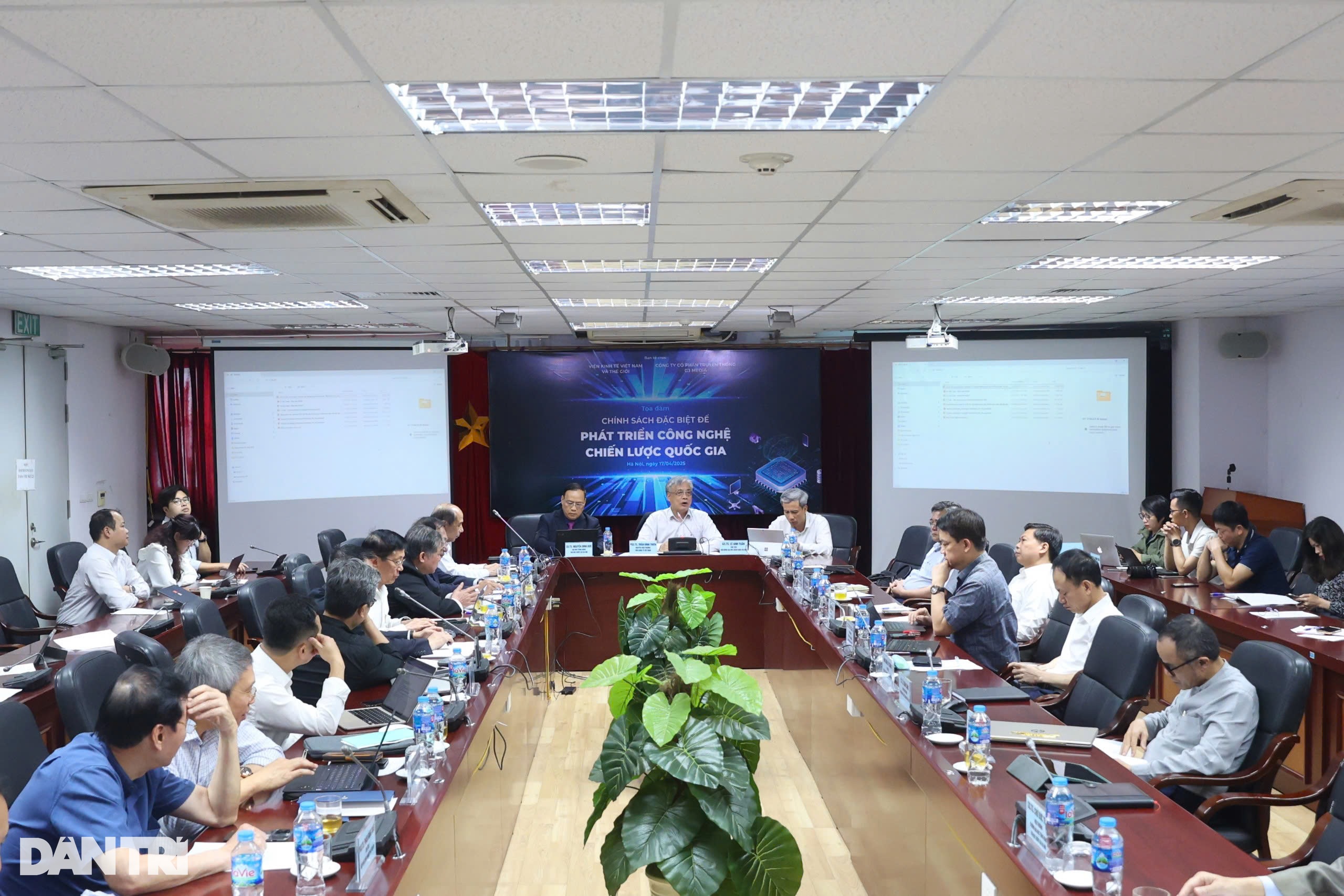
Overview of the discussion (Photo: Chi Hieu).
This is also one of the requirements made by General Secretary To Lam at the meeting of the Central Steering Committee on science, technology development, innovation and digital transformation (Resolution 57).
The General Secretary directed the urgent issuance of a list of strategic technologies, focusing on the semiconductor industry, making Vietnam an important link in the global supply chain, especially in the field of rare earths.
Are more than 23,000 PhDs fully contributing to production development?
At the event, Professor, Dr. Ho Tu Bao, Director of the Data Science Laboratory, Institute for Advanced Study in Mathematics, shared that developed countries such as the US, France, Germany, Japan, etc. often spend about 14-15% of their resources on science and technology (S&T) and basic research.
The total basic research and applied research is usually below 40%, while development research accounts for over 60% because they have a strong industrial base.
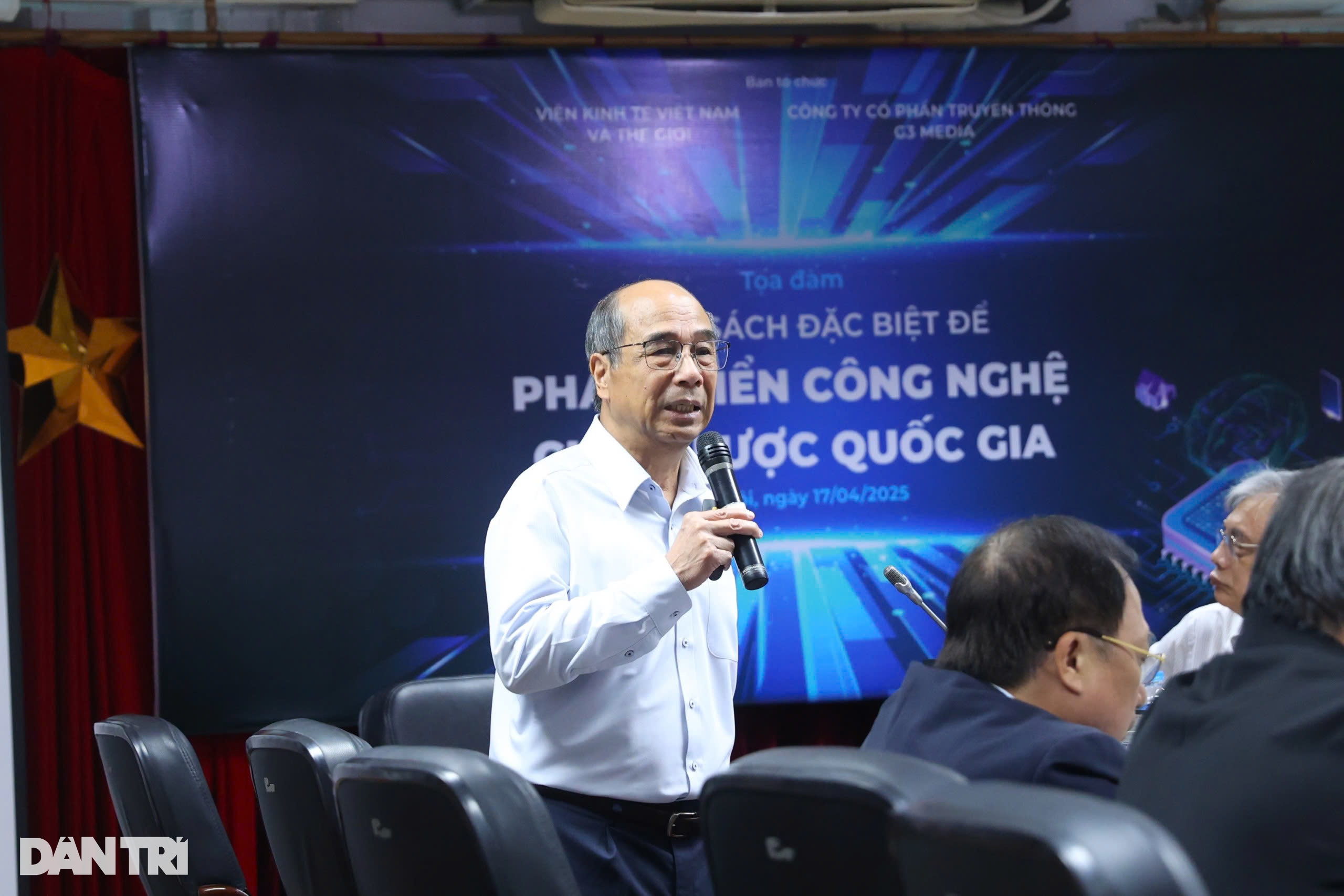
Professor, Doctor of Science Ho Tu Bao shared at the seminar (Photo: Chi Hieu).
"The general investment level for science and technology is usually around 3% of GDP, like South Korea, they invest very high up to 4.9% of GDP for research and development (R&D). Meanwhile, China only spends 6% on basic research, but up to 83% in the field of research and development. These numbers reflect the strategy and structure of science and technology of each country," Professor Ho Tu Bao expressed.
Accordingly, we have not clearly distinguished these three types of research, often confusing basic research and applied research.
It is very difficult to find accurate data on investment structure, although the number of scientists in Vietnam is large but the efficiency is not high.
Professor Bao cited statistics from August 2023 showing that Vietnam has approximately 743 professors, more than 91,000 university lecturers, and more than 23,776 PhDs.
"This is a huge intellectual force, but how many of Vietnam's more than 23,000 PhDs are actually working daily in developing the country's production? While China only invests 6% in basic research, they are still very strong? Should we reconsider the policy of promoting basic research?", Professor Bao expressed his opinion.
The professor pointed out some challenges that Vietnam's science and technology sector is facing such as:
Academic: Mainly stops at research in institutes and schools, creating a lot of research but little transfer into production.
Lack of connection with production: This is the core weakness. Science and technology lack motivation from the real needs of the economy and businesses.
Lack of national key programs (Top-down): We lack "big problems" set by the state to concentrate good resources to solve, as we did before (manufacturing weapons during the resistance war, producing penicillin, eradicating malaria, clearing mines...).
Popularizing the "Bottom-up" approach: Research topics mainly come from the ideas and personal strengths of scientists, are mainly for building strength but are difficult to create major breakthroughs and solve important national problems.
Proposed KCC model: Since 2016, the Professor has proposed a model for evaluating science and technology according to "Type - Method - Size". Type: basic research, applied research, development research. Method: experimental research, theoretical research, data-driven research (a direction that needs to be promoted). Size: Small topics (bottom-up) and large topics (top-down - needs to be strengthened).
What strategic technology does Vietnam need?
According to Professor Dr. Le Anh Tuan, Chairman of the Council of Hanoi University of Science and Technology, Vietnam needs to orient the development of specialized chips and participate in the global supply chain.
"Currently, we can focus on mid-range specialized chips (for example, Viettel develops 28-150nm telecommunications chips), while high-end phone chips (3-5nm, approximately 20 billion transistors) require huge investments. Vietnam is not yet capable of complete self-sufficiency but can participate in certain stages," Professor Tuan shared.

Professor, Dr. Le Anh Tuan, Chairman of the Council of Hanoi University of Science and Technology (Photo: Chi Hieu).
According to Professor Tuan, Vietnam needs some strategic technologies such as:
Automation and Robotics technology for application in smart manufacturing, logistics, urban sanitation, and epidemic prevention. Especially at a time when the need to automate existing factories in Vietnam is very large.
New Materials and Clean Energy Technology: Applications in developing clean transportation, sustainable construction infrastructure, and energy saving. This is an area that Vietnam can participate in.
Dual-use Technology: It is necessary to promote the development of technologies that serve both the socio-economic and national defense and security. Vietnam has strengths and capabilities in the defense industry such as developing space technology and UAV drones.
Biotechnology and Biomedicine: Serving preventive medicine, vaccine production, pharmaceuticals, urban health management.
Agricultural Technology: Development of high-tech plant and animal varieties that can complement biotechnology.
"Artificial Intelligence (AI) has the ability to change the platform, towards smarter robots. Big Data, Internet of Things (IoT). Blockchain technology needs to be concerned and applied in land management, public administration, and transparency of public finance," Professor Tuan proposed.
In particular, Cyber Security and Information Security technology is extremely important to ensure data and information system safety in the upcoming comprehensive digital transformation process.
The Chairman of the Polytechnic University Council emphasized that to deploy strategic technology, it is imperative to have corresponding strategic mechanisms. Not only relying on the national budget, but also requiring the participation of localities, the whole society and businesses.
The Key Role of Technology and Management
At the seminar, Associate Professor Dr. Nguyen Van Thanh, Vice Chairman of the Central Theoretical Council, shared: "My working experience (including when I was Chairman of Hai Phong City and in contact with international organizations such as the World Bank (WB) shows the importance of clearly distinguishing: Strategy and Policy".
Strategy: Is a long-term plan and vision (until 2030, 2045 or beyond), determining the main direction, this is like the "backbone" of the fish.
Policy: Is a system of principles, mechanisms, and specific solutions to realize the strategy, helping to go in the right direction and go fast. For example, other parts (fins, body...) help the fish swim effectively.
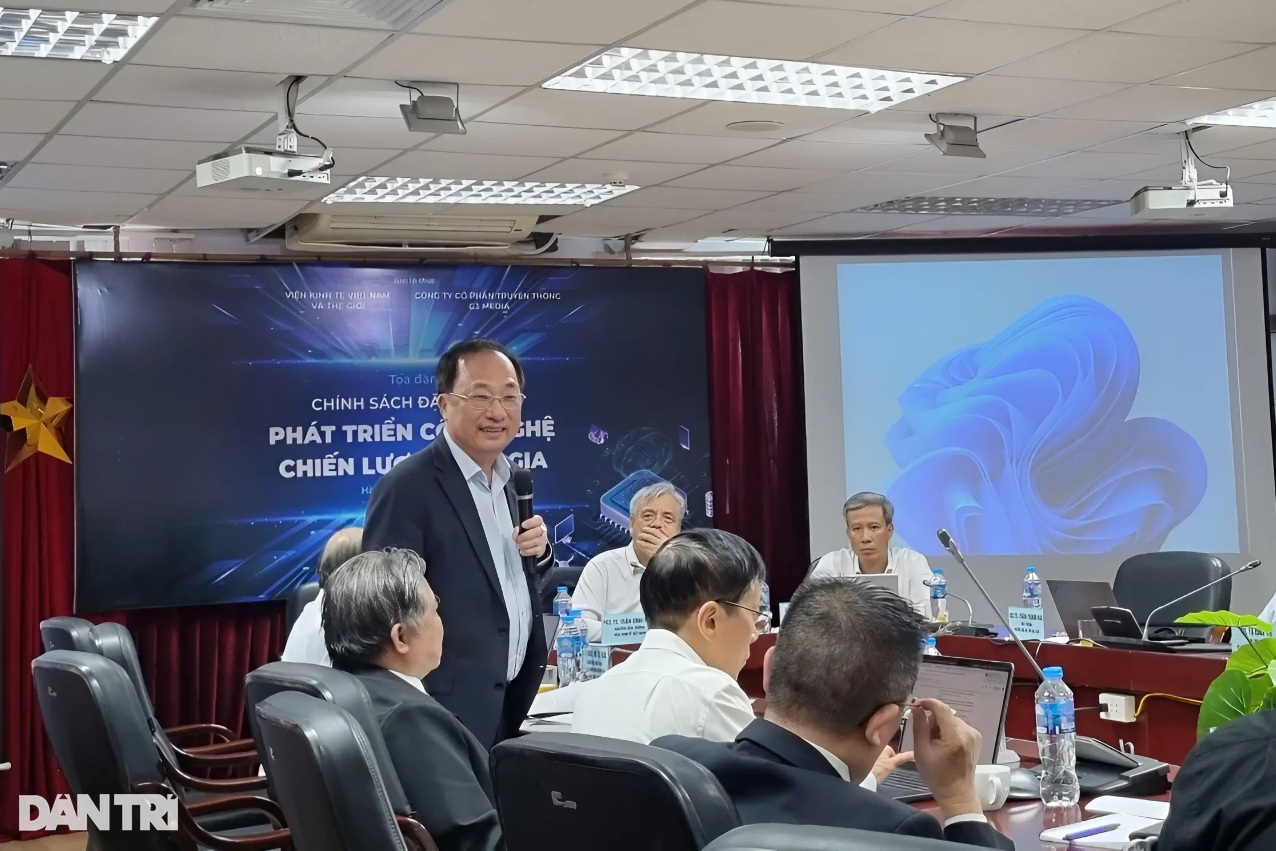
Associate Professor, Dr. Nguyen Van Thanh, Vice President of the Central Theoretical Council shared (Photo: Trung Nam).
"Reality shows that many countries, despite limited resources, still rise to the top of the world thanks to technology. When exchanging in Korea, they emphasized the two core factors that made their miraculous development: "management and technology".
This is similar to Peter Drucker's view: "There are no underdeveloped countries, only poorly managed countries". Industrial revolutions (from mechanization, automation, computerization to digitalization and AI today) all affirm the driving role of technology, but must go hand in hand with effective management capacity", the Deputy Chairman of the Central Theoretical Council shared.
An important suggestion is that we need to clearly define Vietnam's strategic technology portfolio in a focused, focused manner, instead of the previous scattered portfolios (priority, spearhead...). It is necessary to carefully analyze the strengths, weaknesses, opportunities, and challenges (SWOT) of each technology choice, learning from both successful and failed experiences around the world.
According to Associate Professor Nguyen Van Thanh, we must identify both positive and negative aspects. For example, AI brings great opportunities but also raises questions about human existence in an AI society.
The digital age puts data at the center, whoever holds the data wins. However, it also comes with huge challenges in ensuring privacy and data security. The leak of more than 1 million medical records in Singapore is a valuable lesson in the risk of instability and social conflict if this issue is not well managed.
"We are building a socialist rule-of-law state, with the core principle of respecting the law. The law must be clear and transparent so that all citizens and businesses know what can and cannot be done and must comply. It is necessary to overcome the mindset of finding ways to circumvent the law and disregarding discipline," Associate Professor Thanh emphasized.
Accordingly, recent Central Resolutions such as Resolution 57 have proposed important viewpoints, solutions, and breakthroughs. The Resolution clearly identifies scientific and technological breakthroughs as the leading growth driver, as significant as James Watt's steam engine creating the industrial revolution.
Associate Professor Thanh expressed: "The fact that Resolution 57 was issued at a time of special significance (the founding day of the Vietnam People's Army, December 22) and was directly directed by the General Secretary shows its strategic importance. Therefore, I would like to request scientists and experts, through today's workshop, to proactively propose specific and truly breakthrough mechanisms and policies to bring the Resolution into life.
There are three things that, once gone, never come back: words, time and opportunity. We need to act urgently, because time and opportunity do not wait. In particular, there needs to be a synchronous policy to train and develop high-quality human resources, because technology cannot develop on its own without people to operate and innovate."
Source: https://dantri.com.vn/cong-nghe/thuc-day-cong-nghe-chien-luoc-can-chinh-sach-dac-biet-loai-bo-tu-duy-cu-20250417224513448.htm



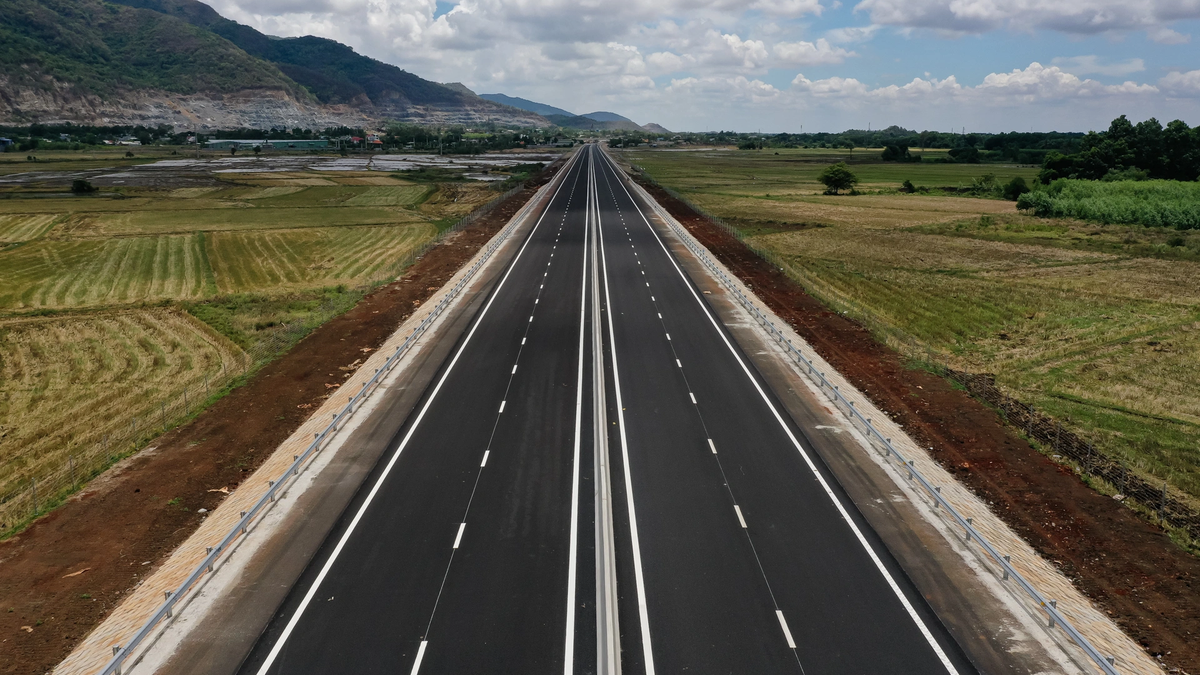

![[Photo] Special flag-raising ceremony to celebrate the 135th birthday of President Ho Chi Minh](https://vphoto.vietnam.vn/thumb/1200x675/vietnam/resource/IMAGE/2025/5/19/1c5ec80249cc4ef3a5226e366e7e58f1)
![[Photo] Party and State leaders visit President Ho Chi Minh's Mausoleum](https://vphoto.vietnam.vn/thumb/1200x675/vietnam/resource/IMAGE/2025/5/19/d7e02f242af84752902b22a7208674ac)
![[Photo] Party and State leaders attend the special art program "You are Ho Chi Minh"](https://vphoto.vietnam.vn/thumb/1200x675/vietnam/resource/IMAGE/2025/5/18/6895913f94fd4c51aa4564ab14c3f250)







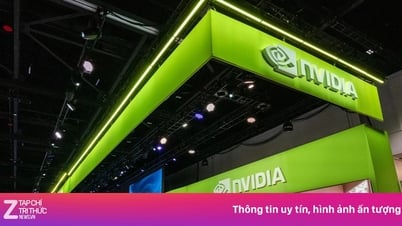










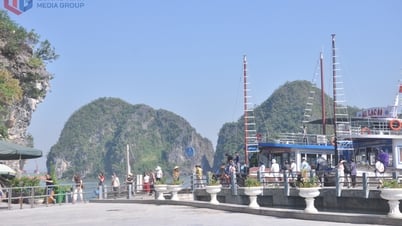



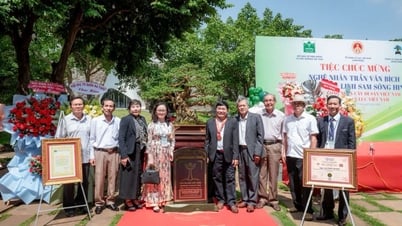











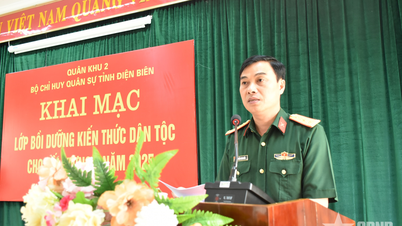
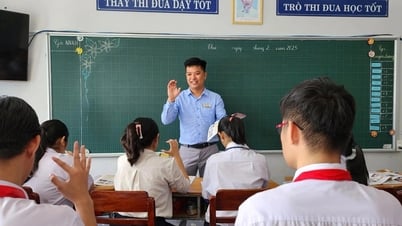

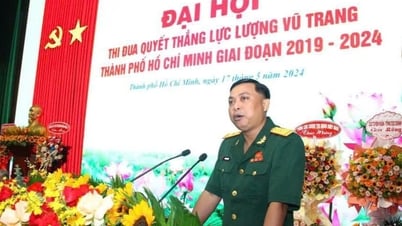

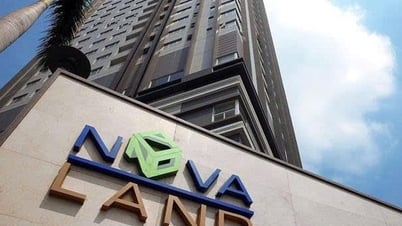

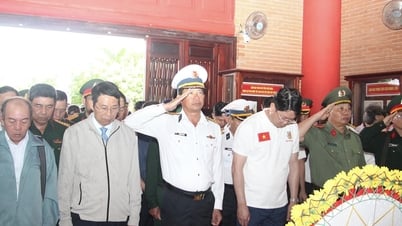


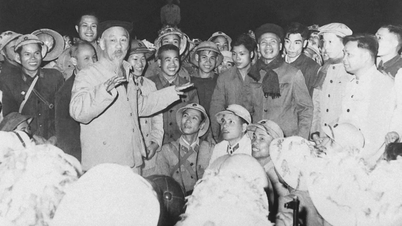
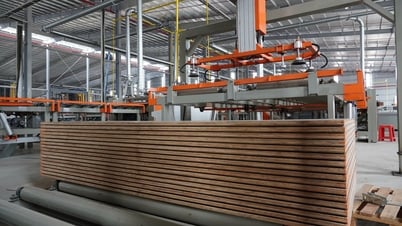
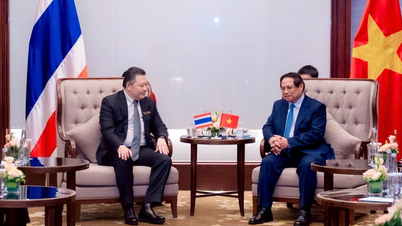




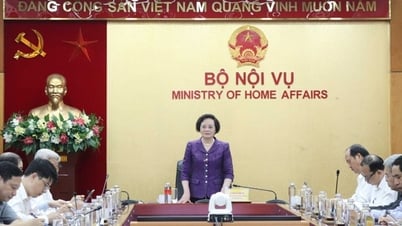

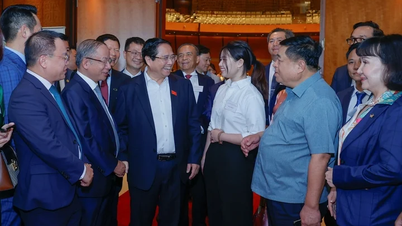
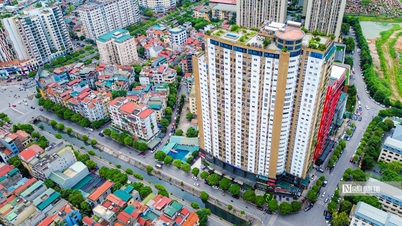


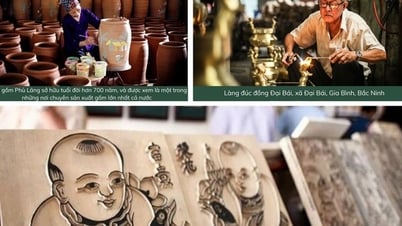

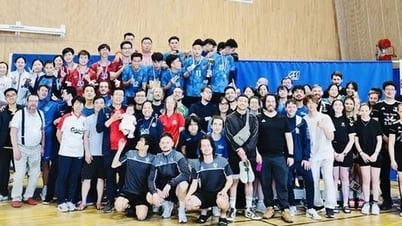

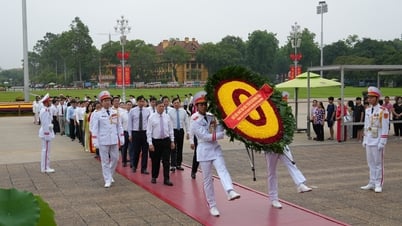

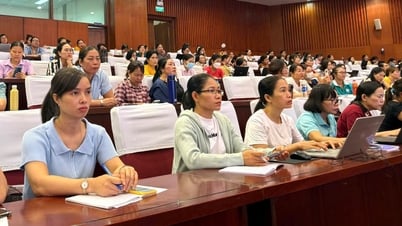





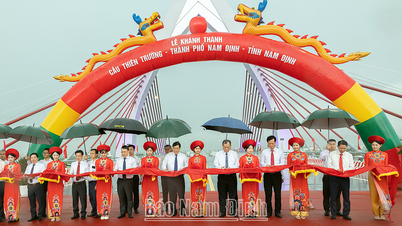



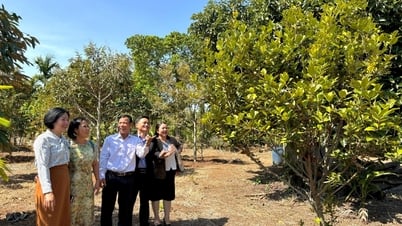

![[VIDEO] - Enhancing the value of Quang Nam OCOP products through trade connections](https://vphoto.vietnam.vn/thumb/402x226/vietnam/resource/IMAGE/2025/5/17/5be5b5fff1f14914986fad159097a677)








Comment (0)